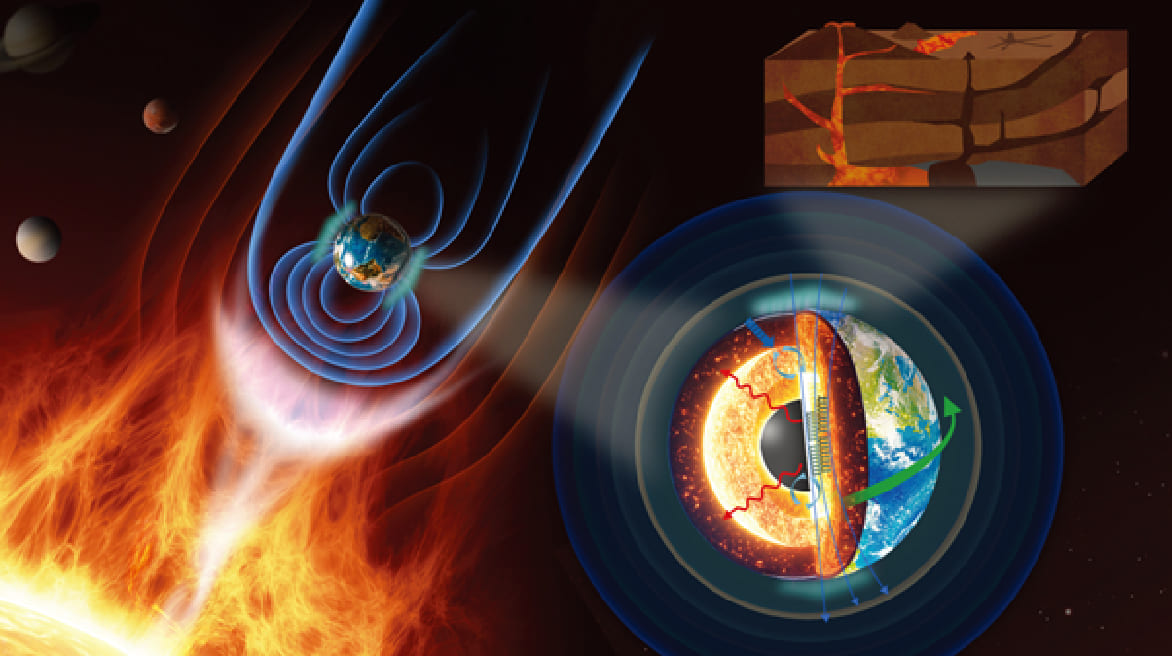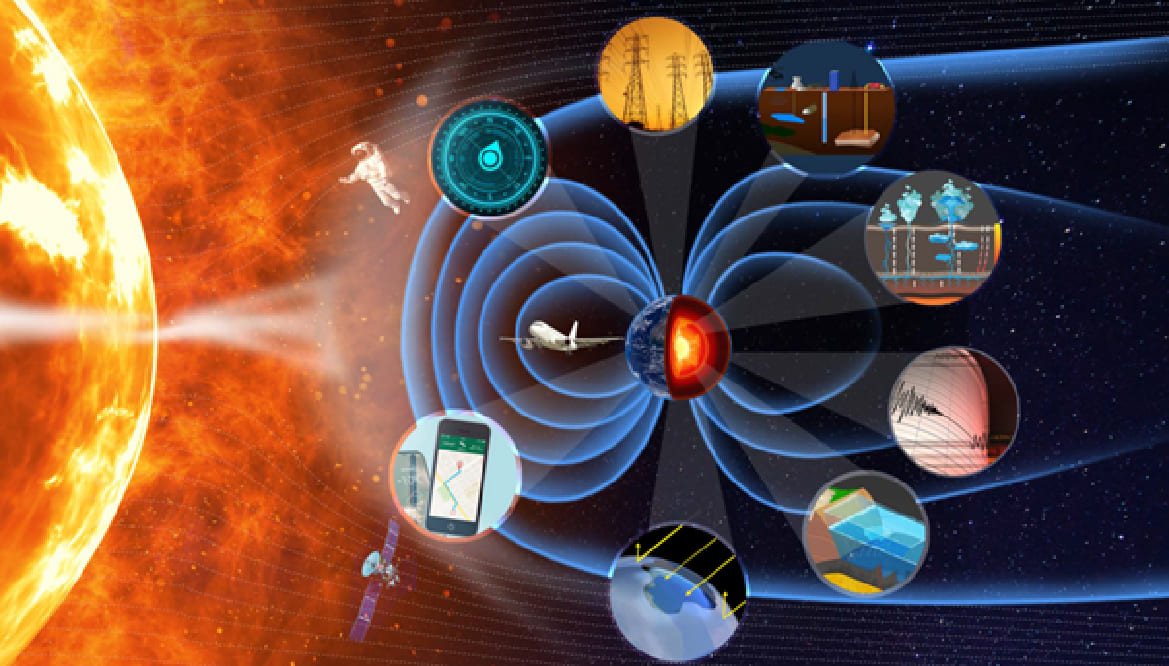Our research area
 Research area of the Society of Geomagnetism and Earth, Planetary and Space Sciences (SGEPSS) ranges from the Earth's core to the solid Earth, oceans, atmosphere, ionosphere, magnetosphere, interplanetary space, solar atmosphere, solar system bodies, and even beyond the heliosphere. We discuss various phenomena in these regions in common science terms such as electromagnetism, electromagnetic hydrodynamics, plasma physics, and photochemistry. A variety of research methods are used, ranging from electromagnetic observations on the ground and ocean floor, geological and mineralogical analysis, direct observations in the upper atmosphere and in space, remote sensing by large radar and spectroscopic instruments, and numerical experiments using supercomputers. The Society's research is useful for the development of new measurement techniques, resource exploration, disaster prevention, and the utilization of space by satellites and space stations, as well as providing fundamental knowledge to clarify the birth and evolutionary mechanisms of the Earth, its atmosphere, and life, and to predict the future global environment.
Research area of the Society of Geomagnetism and Earth, Planetary and Space Sciences (SGEPSS) ranges from the Earth's core to the solid Earth, oceans, atmosphere, ionosphere, magnetosphere, interplanetary space, solar atmosphere, solar system bodies, and even beyond the heliosphere. We discuss various phenomena in these regions in common science terms such as electromagnetism, electromagnetic hydrodynamics, plasma physics, and photochemistry. A variety of research methods are used, ranging from electromagnetic observations on the ground and ocean floor, geological and mineralogical analysis, direct observations in the upper atmosphere and in space, remote sensing by large radar and spectroscopic instruments, and numerical experiments using supercomputers. The Society's research is useful for the development of new measurement techniques, resource exploration, disaster prevention, and the utilization of space by satellites and space stations, as well as providing fundamental knowledge to clarify the birth and evolutionary mechanisms of the Earth, its atmosphere, and life, and to predict the future global environment.
 There are many natural phenomena that have a significant impact on human society and life. Disturbances in the Earth's magnetosphere and ionosphere, including geomagnetic storms caused by solar activity, can lead to satellite failures, astronaut exposure, and disruptions in communications and broadcasting, and sometimes cause major damage to power grids. Earthquakes, tsunamis, and volcanic eruptions also cause tremendous human and material damage. To cope with such natural disasters, we are conducting various researches to clarify and predict them. At the same time, to enrich our social life, we are applying electromagnetic methods to the navigation of aircraft, ships, and vehicles, and to the exploration of underground and seafloor resources. We also contribute to archaeological research, by using paleomagnetism recorded in archaeological sites and artifacts as a clue for chronological estimation. In addition to deepening our understanding of natural phenomena surrounding the Earth, we are conducting research that will help our safer, richer, and more sustainable life.
There are many natural phenomena that have a significant impact on human society and life. Disturbances in the Earth's magnetosphere and ionosphere, including geomagnetic storms caused by solar activity, can lead to satellite failures, astronaut exposure, and disruptions in communications and broadcasting, and sometimes cause major damage to power grids. Earthquakes, tsunamis, and volcanic eruptions also cause tremendous human and material damage. To cope with such natural disasters, we are conducting various researches to clarify and predict them. At the same time, to enrich our social life, we are applying electromagnetic methods to the navigation of aircraft, ships, and vehicles, and to the exploration of underground and seafloor resources. We also contribute to archaeological research, by using paleomagnetism recorded in archaeological sites and artifacts as a clue for chronological estimation. In addition to deepening our understanding of natural phenomena surrounding the Earth, we are conducting research that will help our safer, richer, and more sustainable life.
